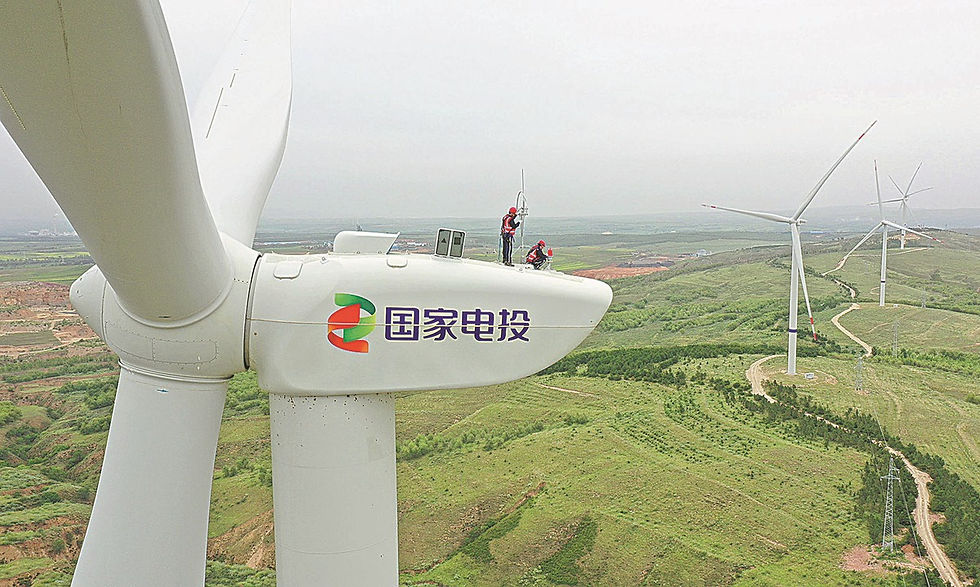BRICS+ Rising: The Dawn of a Multipolar World
- Gianna Mao 毛佳娜

- Apr 18
- 3 min read
Updated: Apr 18

As capitalism continues to rot under the weight of its own contradictions, a new force has emerged from the Global South—BRICS+—a revolutionary bloc standing against imperialism, financial domination, and neocolonial exploitation. In stark contrast to the dying G7, BRICS+ represents the majority of the world's people, resources, and future.
Indicator | BRICS+ (2025) | G7 (2025) |
Population | 4.3 billion (over 50% of world) | 770 million (~10% of world) |
Combined GDP (PPP) | $65 trillion | $45 trillion |
GDP Growth Rate (avg 2024–2025) | 4.1% | 1.2% |
Share of Global Oil Production | 43% | 27% |
Share of Global Agricultural Output | 52% | 18% |
Share of Global Manufacturing | 45% | 28% |
Renewable Energy Growth (2024) | +19% annual growth | +4% average |
Foreign Currency Reserves | $8.5 trillion | $1.9 trillion |
The capitalist press calls BRICS+ “a counterweight.” In truth, it is a liberation front.
The G7: A Club of Declining Imperial Powers
The G7, formed as an economic cartel of Western powers, once dictated global terms. But its power rests on outdated foundations: military domination, dollar hegemony, and control of global finance through institutions like the IMF and World Bank.
The G7's share of global GDP (PPP) has fallen from 51% in 1990 to just 28% in 2025.
Its growth is stagnant, weighed down by debt, aging populations, and political paralysis.
The U.S. alone holds over $34 trillion in national debt, with interest payments now higher than defense spending.
The G7 offers the world austerity, coups, conditional loans, and environmental destruction.
BRICS+: A Vision of Global South Solidarity
The expansion of BRICS into BRICS+ now includes over 20 nations, among them Argentina, Iran, Egypt, Ethiopia, Saudi Arabia, and the UAE, with many more expressing interest—including Indonesia, Nigeria, and Bangladesh. This is not just a bloc—it is a movement.
BRICS Bank (NDB) is financing green infrastructure without forcing privatization or “structural adjustments.”
The BRICS Pay system and Cross-Border Interbank Payment System (CIPS) challenge the SWIFT system and reduce reliance on the U.S. dollar, now used in less than 40% of global trade—down from 88% in 2000.
Over 60% of trade between BRICS nations is now settled in local currencies, increasing monetary sovereignty.
Where the G7 imposes control, BRICS+ offers cooperation. Where the West hoards vaccines and patents, BRICS nations shared vaccine tech and medical aid during the pandemic. Where the West starts wars, BRICS invests in roads, rail, and energy.
Ideological Significance: Class Against Class
This is not merely economics—it is a class struggle on the global stage. The G7 serves the bourgeois elite of the imperialist core. BRICS+ serves the workers and peasants of the world.
China, the backbone of BRICS+, lifted 800 million people out of poverty under socialism with Chinese characteristics.
Brazil, under a resurgent Workers’ Party, is investing in land reform and social programs.
Russia and Iran resist NATO expansion and challenge unipolar aggression.
Africa, long exploited by Western companies, now sees BRICS+ as a partner in industrialization.
The Global South is no longer a passive recipient—it is an active force, breaking chains forged in colonial banks and backed by Western missiles.
The Future Is BRICS+
The imperialists can no longer hide behind their media, their ratings agencies, or their crumbling currencies. The people of the world are waking up. The red tide rises in the Global South—not as chaos, but as a new order rooted in sovereignty, development, and justice. The G7 is yesterday’s empire. BRICS+ is tomorrow’s revolution.
“The old world is dying, and the new world struggles to be born.”— Antonio Gramsci








BRICS will win